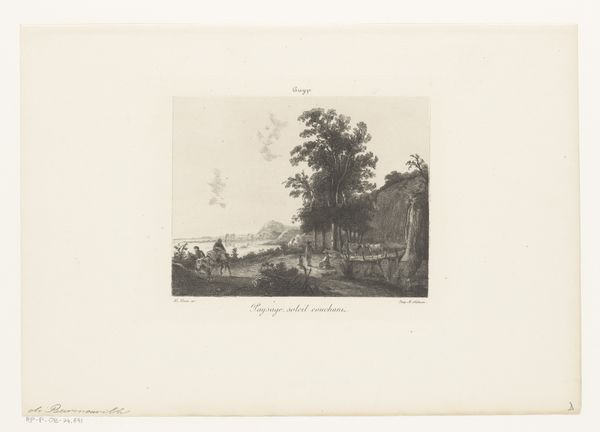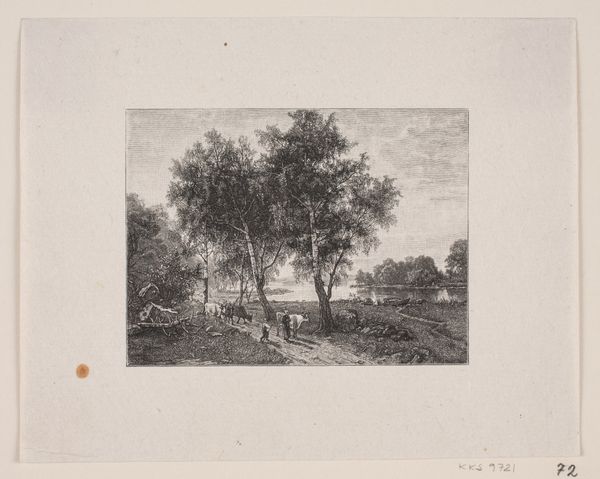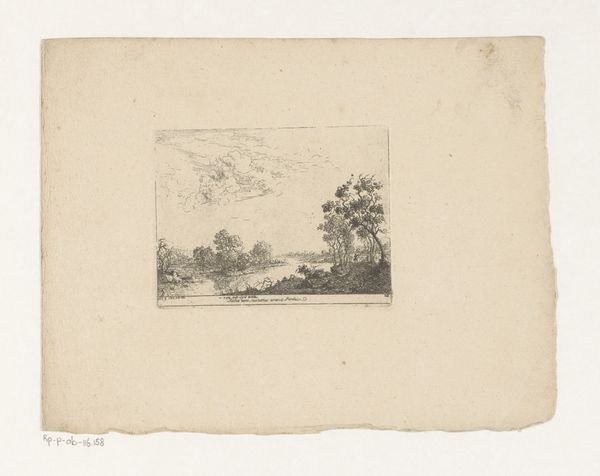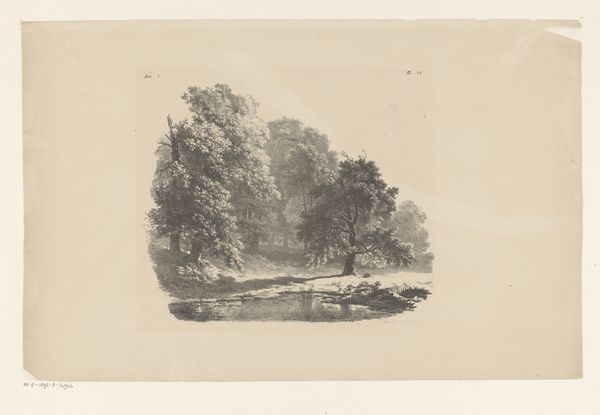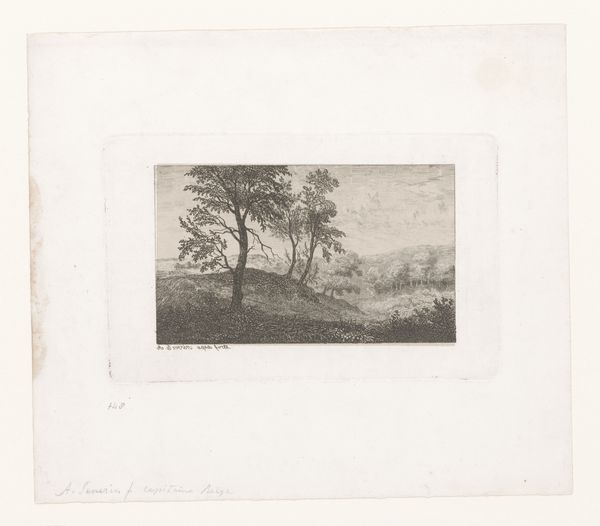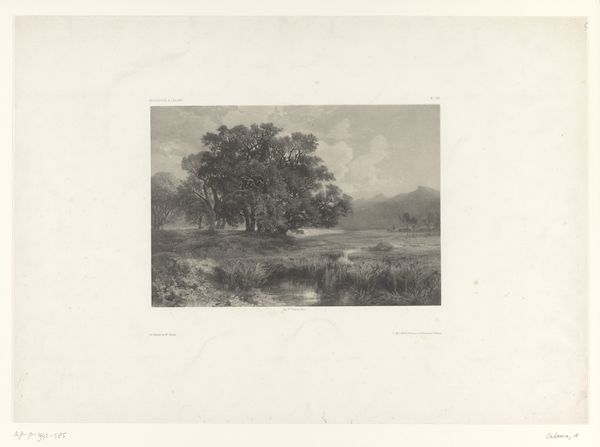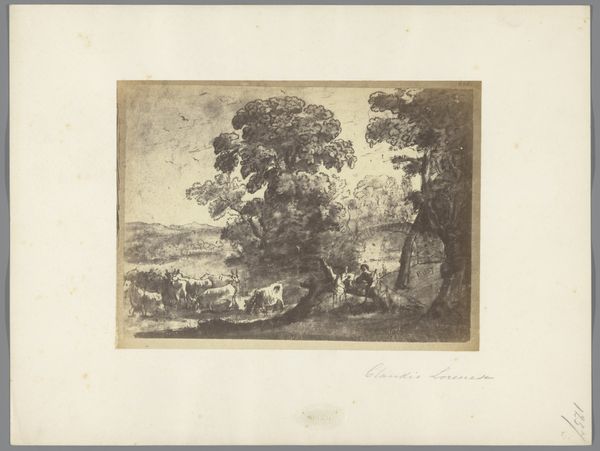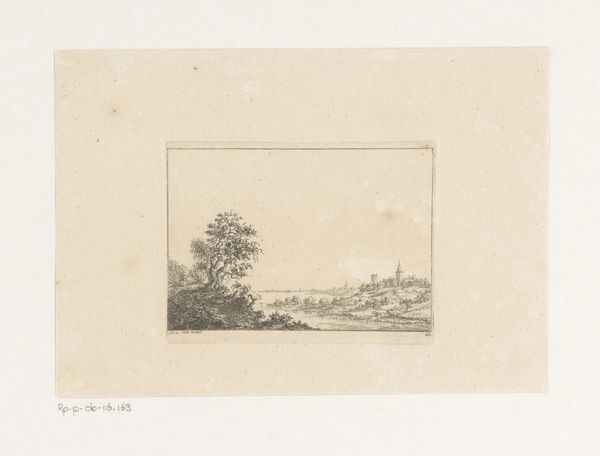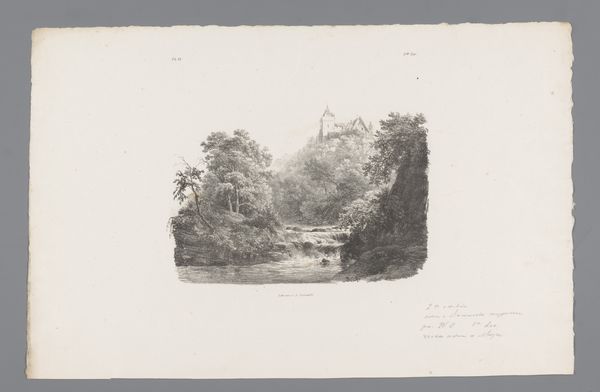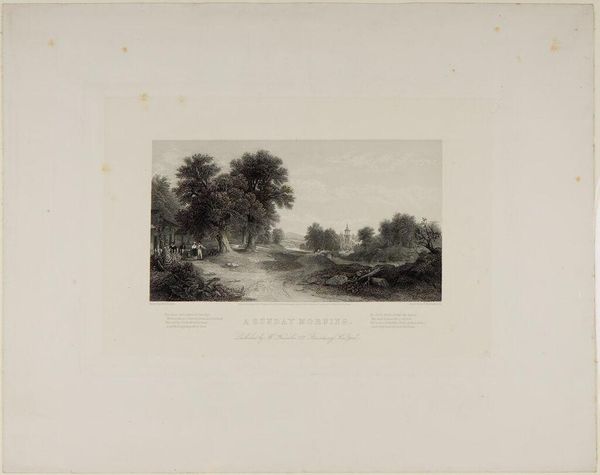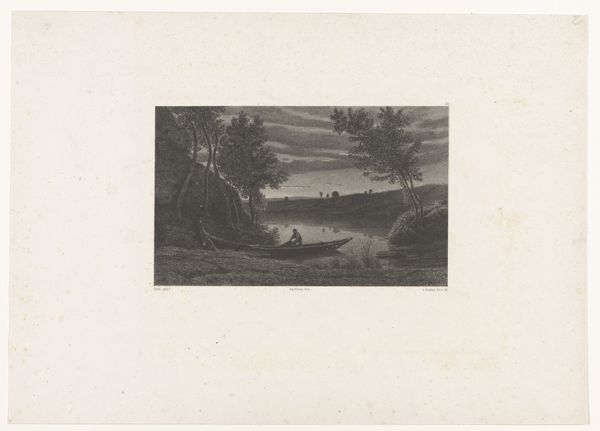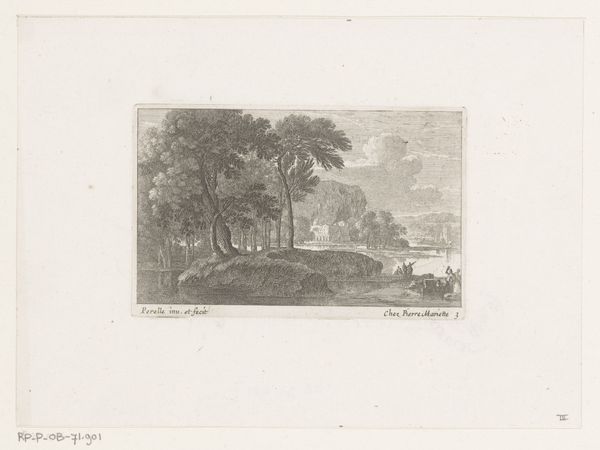
drawing, lithograph, print, paper
#
drawing
#
lithograph
# print
#
landscape
#
paper
#
underpainting
#
romanticism
Dimensions: 86 × 114 mm (image); 177 × 261 mm (sheet)
Copyright: Public Domain
Editor: We’re looking at Louis-Jacques Daguerre's "Study of a Landscape," a lithograph printed on paper. The image has such a delicate, almost dreamlike quality, even though it's just shades of gray. It reminds me of early photography. What historical context should we consider when we view it? Curator: Given Daguerre’s experimentation with photography, which would eventually bear the "Daguerrotype", it’s tempting to see this landscape print as an artifact in the transition of art from older mediums into more technological forms. Do you think the print attempts to convey some sort of commentary on industry, technology or society, by representing nature? Editor: I hadn't thought of it that way, but seeing this artwork as being situated at a moment of artistic transition really does add layers of complexity! I can imagine a tension between traditional art and the new photographic process emerging then, especially because of Daguerre's key role in developing it. This could also be influenced by industrial developments, when urbanisation was really transforming rural land in a lot of Europe, and perhaps beyond. Curator: Precisely. The rise of industrialization heavily influenced landscape painting. This romantic landscape might even be yearning to memorialize, to protect a pre-industrial vista threatened by development and all of the other social and ecological externalities we associate with development. I find this very telling. Editor: I didn't catch all of that upon first looking at this piece, so thanks. That's a much deeper read of its cultural implications, viewing it as commentary on industrialisation. Curator: Well, seeing art in light of how societal power operates can be helpful for seeing how it affects both the creation of the art, and how we react to it.
Comments
No comments
Be the first to comment and join the conversation on the ultimate creative platform.
